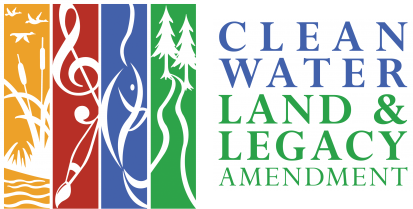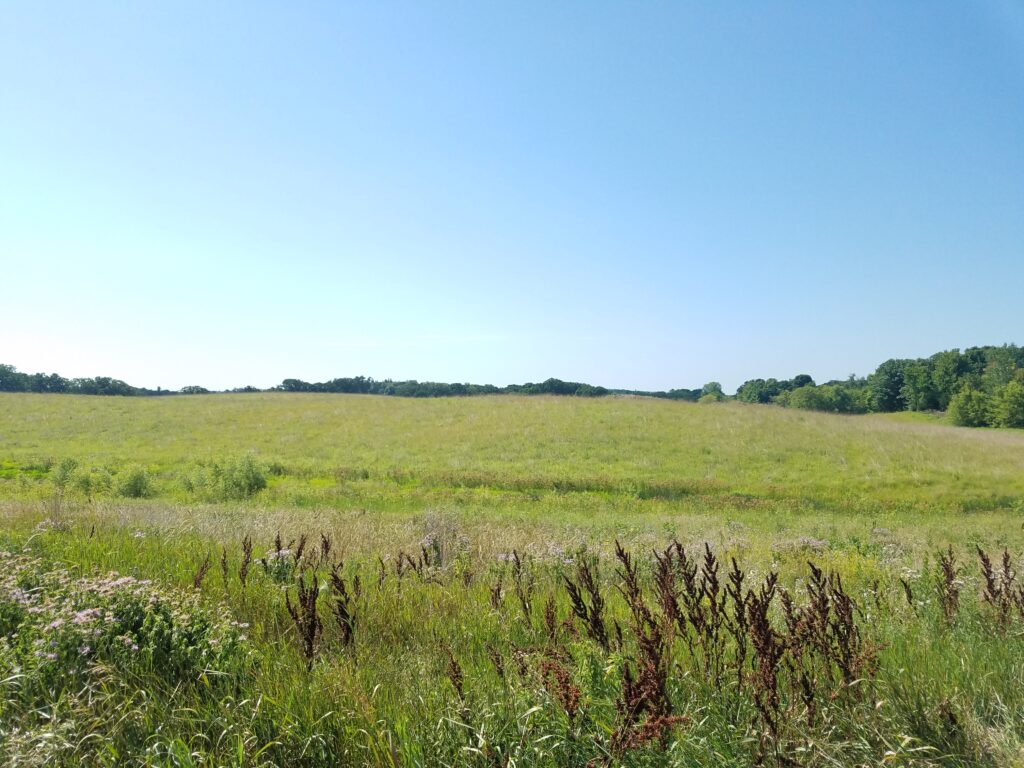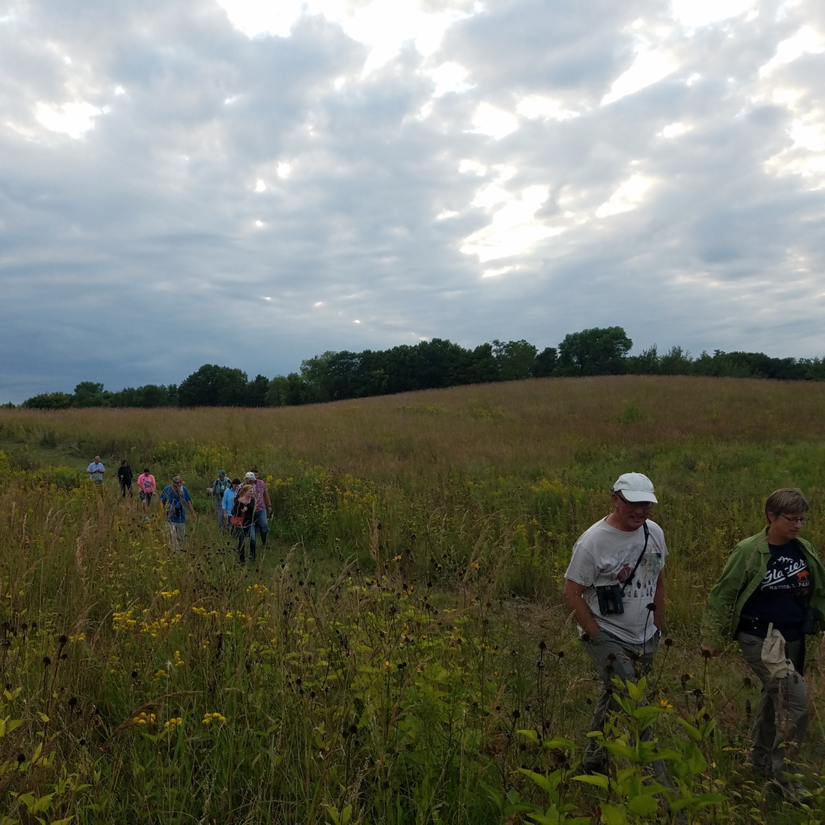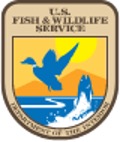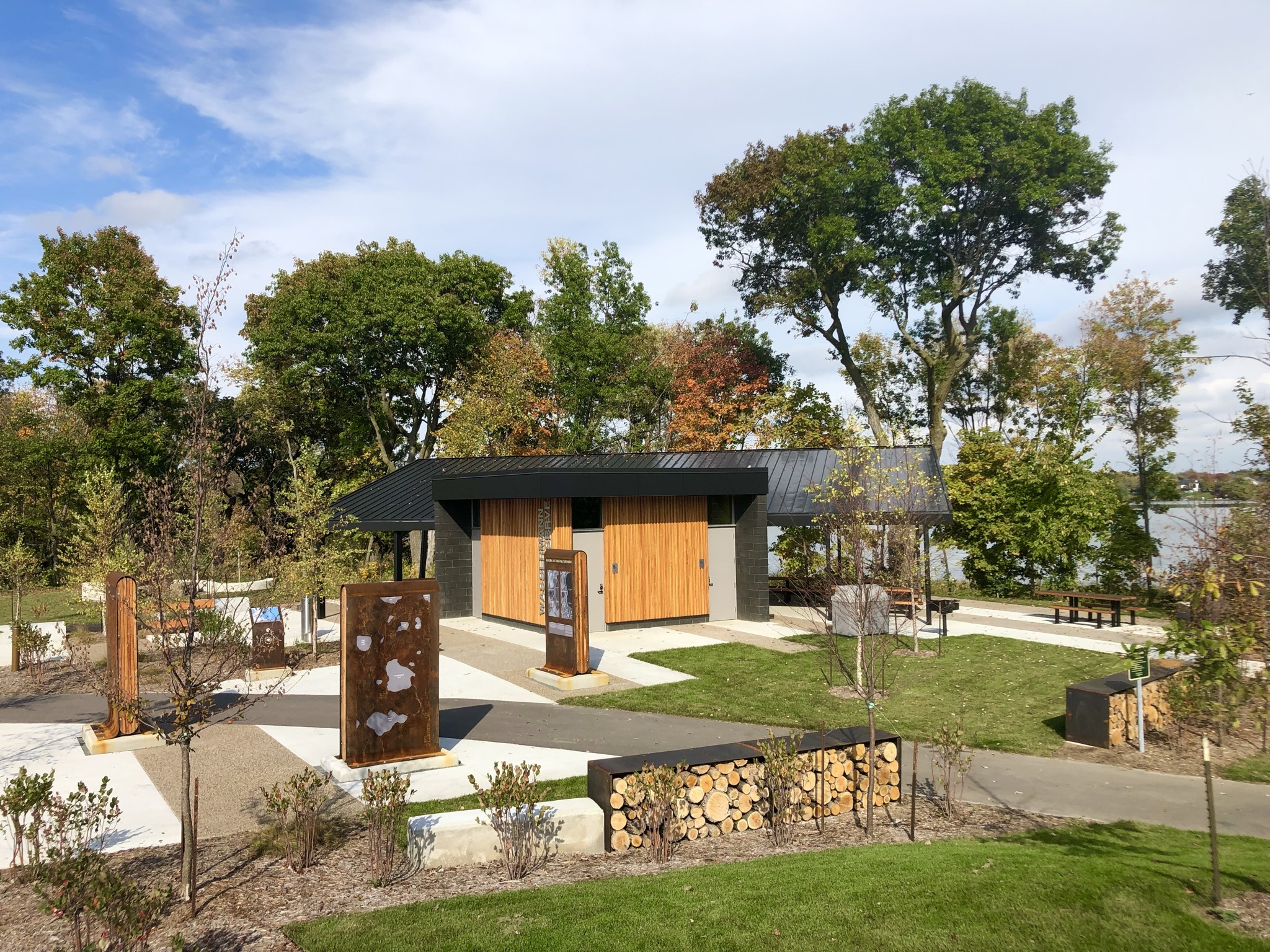
Six Mile Marsh Prairie Restoration
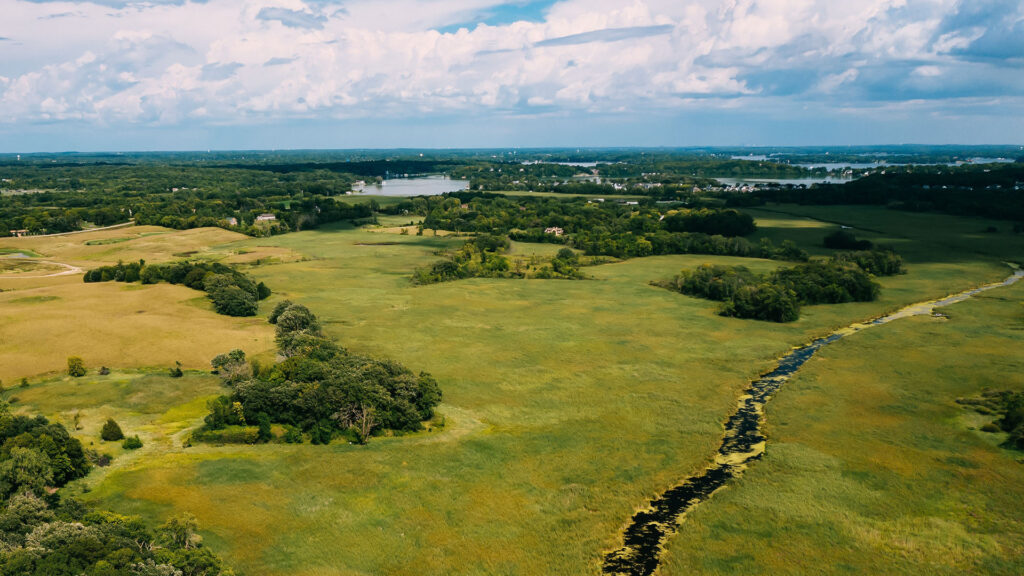
Overview
MCWD’s Watershed Management Plan identified Six Mile Marsh as a key conservation area, and determined the need to restore connections between the marsh and Halsted Bay on Lake Minnetonka to improve water quality, habitat, and increase biodiversity. In 2012, MCWD obtained 230 acres of land near Six Mile Creek, the headwaters of the Minnehaha Creek watershed. This land created the opportunity for MCWD’s largest restoration project. MCWD restored connections between Six Mile Creek and the wetlands it flows through on its way to Lake Minnetonka, reducing runoff and improving habitat in a largely agricultural landscape. The development of the Six Mile Marsh Prairie Restoration was split into two phases; the first phase involved the restoration and establishment of the prairie, and the second phase included the construction and design of the site’s interpretive features.
Since 2013, MCWD has been working to reconstruct the landscape to mirror what existed prior to European settlement. The Six Mile Marsh Prairie encompasses about 124 acres of restored mesic and wet prairie, 79 acres of marsh and open water wetlands, 22 acres of oak savanna, and 4 acres of oak woodland. This restoration work included removing existing buildings, breaking existing drain tile lines, seeding native species, planting oaks, and regularly removing invasive species through vegetation management. New trails through the prairie create recreation opportunities for hiking, biking, birding, and much more, allowing people to experience green space as it was before settlement. By converting the landscape from crops to native vegetation, the health of the soil is improving, and high-quality native plant communities are able to filter out nutrients to improve water quality downstream.
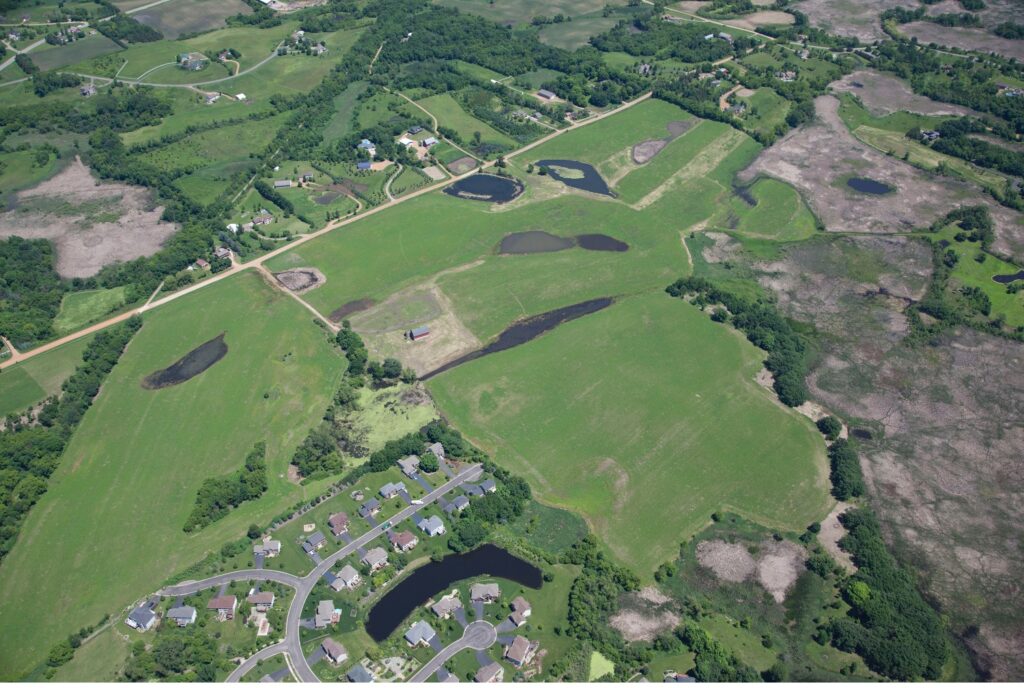
Project Updates
Summer 2023
Construction of a permanent pedestrian trail to connect the Six Mile Marsh Prairie to the Dakota Regional Trail and a parking area off Halsted Drive is currently underway. This construction will include the installation of new interpretive elements throughout the prairie and tell the ecological story of the site. Construction is estimated to be complete in 2023.
Project Timeline

Planning Phase
Planning Phase
Phase 1 & 2:
October 2005 — 23 acres of conservation easement acquired
May 2010 — Project planning begins
August 2011 — 112 acres of land acquired
August 2012 — 97 acres of land acquired

Design Phase
Design Phase
Phase 1:
August 2012 — Design phase begins
October 2012 — Public open house
January 2013 — Open house and public design review; 100% design completed
Phase 2:
June 2021— Design of trail and interpretive features begins
July 2021 — Public meetings, 60% design
September 2021 — 100% design completed

Construction Phase
Construction Phase
Phase 1:
May 2013 — Vegetation establishment and construction begins
July 2013 – November 2015 — Vegetation established and management plan implemented
Phase 2:
Spring 2022 — Construction of trail features begins
April 2023 — Construction completed

Project completion
Project Completion
Phase 1:
2015 — Prairie restoration completed
Phase 2:
May 2023 — Phase 2 of the project completed
By the Numbers
180
pounds
phosphorus reduced annually
12
tons
sediment reduced annually
160
acres
native vegetation restored
9
WEtlands
restored
7
native plant
communities established
Project Highlights
- Stormwater treatment to improve water quality in Six Mile Creek and Halsted Bay
- Prairie and oak savanna restoration
- Drain tile removal to restore the natural hydrology of the land and reestablish wetlands
- Invasive species removal
- New interpretive features and signage
- Historic preservation of the site’s barn and silo
Partnership
The Six Mile Marsh Prairie Restoration resulted from a partnership with the landowners, the Dimler family and the Halverson family. Both families were interested in conserving their land for future generations. After years of discussion, the Dimler and Halverson families opted to sell their land to MCWD so it could be restored to native prairie and protected for years to come.
After purchasing the property, MCWD partnered with the U.S. Fish and Wildlife Service to restore vegetation. Once the prairie, wetlands, and oak woodland were established, MCWD partnered with Great River Greening to conduct ecological research.
Funding
Project Cost: $677,835
Funding for the Six Mile Marsh Prairie Restoration Project was provided by the Minnehaha Creek Watershed District. The U.S. Fish and Wildlife Service provided staff time to help with the restoration design and contributed $5,000 of mesic prairie seed for the restoration. Ongoing vegetation management has been funded by MCWD and through a grant from the Clean Water Land & Legacy Amendment, which has been overseen by MCWD partner Great River Greening.
